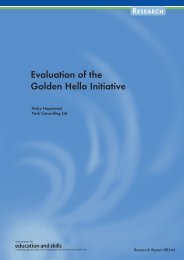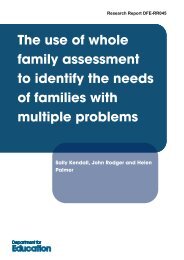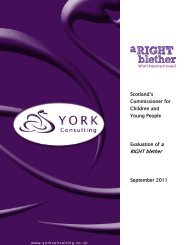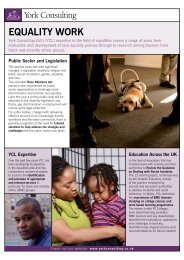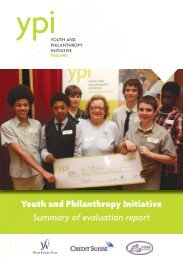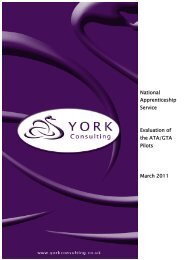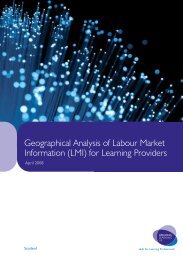Recruitment and Retention in the Post-16 Learning and Skills Sector
Recruitment and Retention in the Post-16 Learning and Skills Sector
Recruitment and Retention in the Post-16 Learning and Skills Sector
Create successful ePaper yourself
Turn your PDF publications into a flip-book with our unique Google optimized e-Paper software.
Perceptions of Entry Routes4.6 A majority of respondents (51%) disagreed with <strong>the</strong> statement that <strong>the</strong>reare not enough entry routes <strong>in</strong>to <strong>the</strong> learn<strong>in</strong>g <strong>and</strong> skills profession. Thiscompares with 31% of respondents who agreed with this statement .4.7 Respondents <strong>in</strong> work based learn<strong>in</strong>g provision were more likely to agreethat <strong>the</strong>re are not enough entry routes (36%) than respondents <strong>in</strong> adultlearn<strong>in</strong>g <strong>and</strong> community provision (25%) <strong>and</strong> fur<strong>the</strong>r education provision(23%).4.8 Figure 4.1 presents <strong>the</strong> f<strong>in</strong>d<strong>in</strong>gs by type of organisation. Respondents <strong>in</strong>sixth form colleges (19%), fur<strong>the</strong>r education colleges (27%) <strong>and</strong> adult<strong>and</strong> community learn<strong>in</strong>g organisations (31%) were least likely to agreethat <strong>the</strong>re are not enough entry routes <strong>in</strong>to <strong>the</strong> learn<strong>in</strong>g <strong>and</strong> skillsprofession.Figure 4.1: Respondents who agree that <strong>the</strong>re are not enoughentry routes <strong>in</strong>to <strong>the</strong> learn<strong>in</strong>g <strong>and</strong> skills profession, by type oforganisation40%37%35%30%34%32%31%27%25%20%19%15%10%5%0%Privatetra<strong>in</strong><strong>in</strong>gIn-housetra<strong>in</strong><strong>in</strong>gVoluntarysectorACL FE college Sixth formBase: All 5492 respondentsSource: YCL/MORI quantitative survey of teach<strong>in</strong>g/tra<strong>in</strong><strong>in</strong>g staff, 20054.9 In terms of subject <strong>the</strong>re are differences by area taught (Figure 4.2).Science (20%), maths (23%) <strong>and</strong> technology (26%) teacher/tra<strong>in</strong>erswere least likely to agree that <strong>the</strong>re are not enough entry routes <strong>in</strong>to <strong>the</strong>learn<strong>in</strong>g <strong>and</strong> skills profession.32



